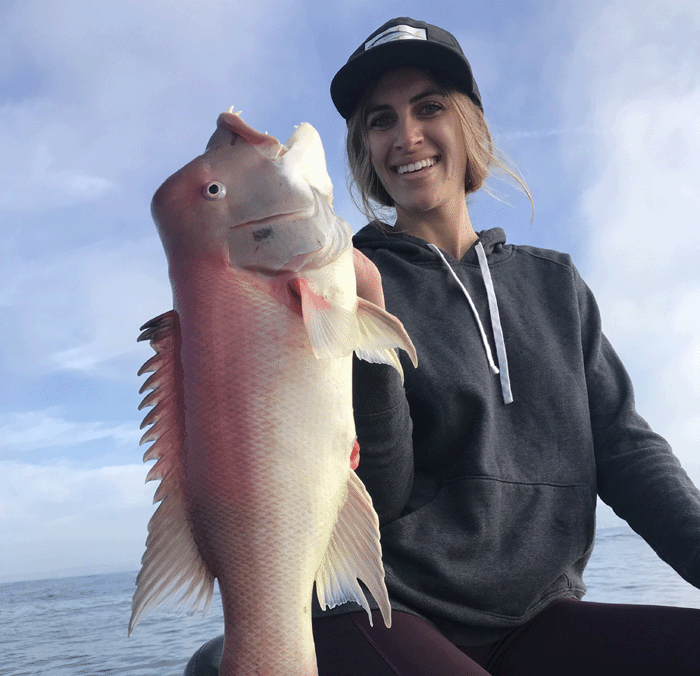
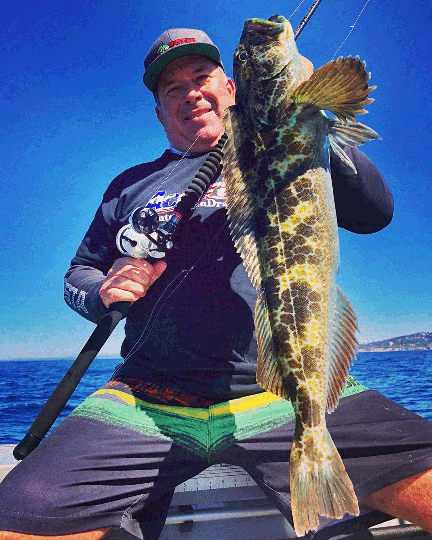 The past few years have seen a spawn of new fishing opportunities on the west coast with the influx of both bluefin and yellowfin tuna here almost year-round. The focus on these other species has taken pressure off of other species including rockfish.
The past few years have seen a spawn of new fishing opportunities on the west coast with the influx of both bluefin and yellowfin tuna here almost year-round. The focus on these other species has taken pressure off of other species including rockfish.
This fishing has been a staple focus of fishermen over the years looking to load their freezers with excellent eating table fare. Rockfish make great fish tacos.
The innovation of braid and smaller more efficient reels has made this fishery a lot more enjoyable for the average angler. In the past anglers used heavier, bigger reels with larger glass rods that made the entire experience one of fighting your tackle more than the fish.
The tackle available to today is extremely light, fitting comfortably in your hand, making the whole catching experience way more interactive between the angler and the fish.
There is a lot of tackle to choose from but its best to stick with the basics. Most outfits on the market can be used for several different targeted fisheries. Braid has created the opportunity to take your small bass rig with 250 yards of 30lb braid and target shallow water (80 to 200 feet) rockfish. Here are some of the reels that would meet your rock fishing needs
Reels: Many of the new bait cast reels on the market are super easy to use with the level wind feature plus they offer plenty of power to land even bigger bottom dwellers. Remember with the diameter of 30 and 50lb braid it sinks faster being less buoyant then mono, and is way more sensitive, letting you feel the difference between structure and bites. Lighter braid seems to be easier to use for reds, chuckleheads, etc. because it gets to the bottom quick and is not hampered by strong currents like larger diameter line.
Some level wind bait cast reels to consider for 30lb braid include Daiwa Lexa 300, Shimano Trax 300, Lews Super Duty 300, and Okuma Komodo 364. For conventional reels the Accurate BV-300, TN-300, and Daiwa Saltiga 20HA are excellent choices.
If looking to fish 40 to 50lb braid the Daiwa Lexa 400, Shimano Trax 400, and Okuma Komodo 463 are also level wind designs. Some of the smaller conventional to check out would include the Accurate BV-400, TN-400, and Daiwa Salitga 30.
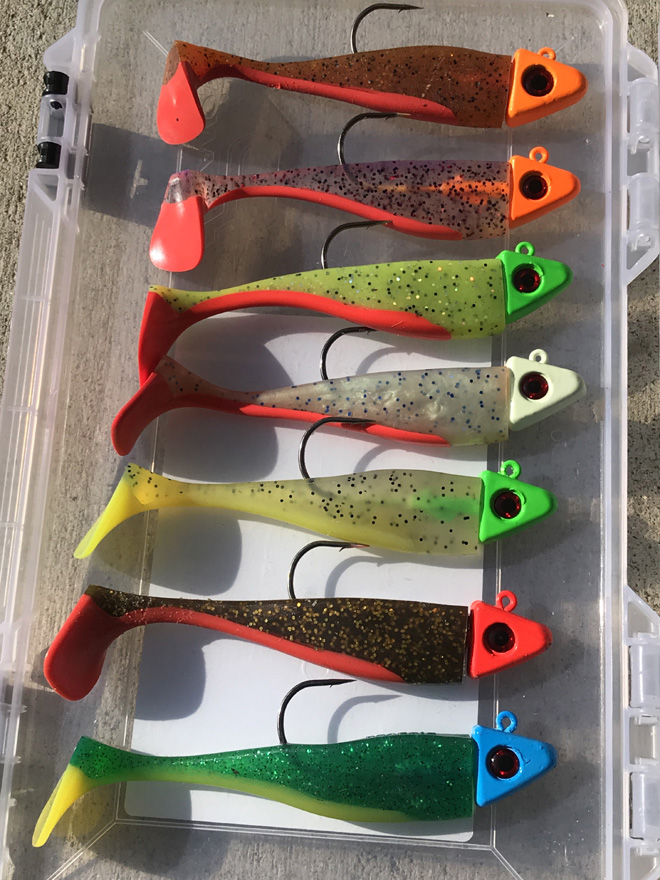 All the reels mentioned above come in a two gear ratios, a power and speed ratio. The higher or mid range gear ratios are more effective so you can get your lures back from the depths quicker. The other important feature to look at is a counter balanced power handle. Its way more comfortable and easier to wind, giving you more torque to wind when bringing up a big red.
All the reels mentioned above come in a two gear ratios, a power and speed ratio. The higher or mid range gear ratios are more effective so you can get your lures back from the depths quicker. The other important feature to look at is a counter balanced power handle. Its way more comfortable and easier to wind, giving you more torque to wind when bringing up a big red.
Rods: The lightweight, sensitive rods of today are a perfect fit for many of the reels previously mentioned. Keeping things simple, look at a 7’, 7’2”, or 7’6” rod. It’s a good idea if possible to put the reel on the rod in the store and check the balance of the combo. You will be holding this for hours on the boat so make sure you like it. Make sure the rod’s reel seat fits your reel tightly with no movement. It is always a good idea to have things solid, this alleviates any unnecessary movement. This is will be a lot more comfortable without a clamp, and the amount of drag you will be using does not dictate using a clamp. When looking at these rods look at the rod ratings. Remember if its 30 to 50lb it’s a 40lb rod that will support using 30 to 50lb braid. Remember you want a more parabolic rod when fishing braid. This takes the pressure off you and transfers it on the fish. Look at medium to fast action rods that have a more parabolic mid section shutting off back towards reel.
The 7’6” length is a very good choice but any of them will work. Try to get a composite rod when looking at choices, they tend to be stronger and the way they are constructed today will bot be that much heavier.
Some good choices are IROD Kaimana series SWK763, SWK764 but there are other models from Calstar, Seeker, Fishing Syndicate, and United Composite that will do the job.
Line: Braided line is the best choice, 30, 40, and 50lb tests are awesome choices. Lighter tests are good for cleaner, less structure areas, and then use heavier test for areas with more structure. Fluorocarbon or monofilament leaders are always a good choice. Flouro is tougher in the more abrasive areas fished, where mono seems to work great in less rocky areas.
Size of leader used is between 25lb and 40lb which is staple and its easier to tie smaller knots that go in and out of guides smoothly. Length of leaders is usually 2 to 3 feet but as long as 6’ for guys that don’t want to retie knots with braid.
Learn to tie a good connection knot between leader and braid being used. Smaller knots are preferred to wind line in and out of guides. The improved Pena knot, Albright knot, or double Uniknot are quick and solid connections. It is very important to tie knot cleanly as to not over wrap lines but make sure you cinch knots tightly.
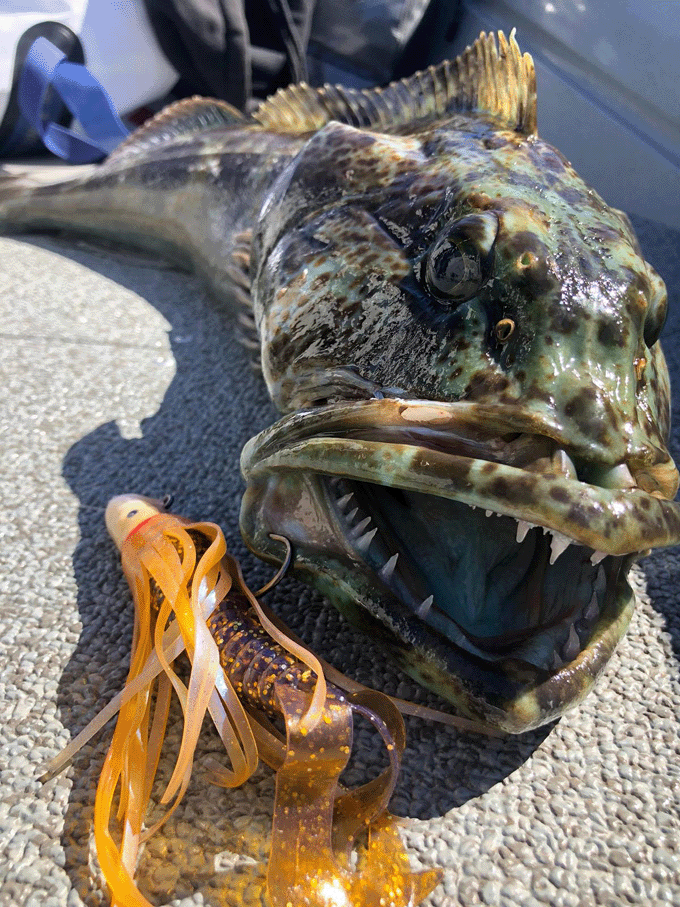 Artificial lures: There are a lot of artificial lures to choose from but here are a few to consider for rock fishing.
Artificial lures: There are a lot of artificial lures to choose from but here are a few to consider for rock fishing.
Some of today’s artificial lures have Ultra Violet and Glow properties built right in them. UV colors unlike other colorations offer luminesce that cannot be seen by human eyes, but it has been proven that fish see it, and react to it even in low light conditions. They also feature glow components that once charged will stay lit in the deeper water structures targeted. Bottom line its about visibility, and action of lures to illicit a strike. Scent is also very important to get the fish to hold on to lure longer for solid hook set.
PitBull Tackle Killer jigs have been very productive in both northern and southern California waters. The Killer jigs come with UV / Glow features in lures as mentioned above and offered in five fish catching colors. Depending on how deep you are fishing the more popular sizes are 2, 4, and 6 ounce but they also have an 8oz for those anglers targeting deeper waters.
These lures get bit on the drop, dead sticking (no movement), and on a slow pump retrieve right on the bottom.
Rockcod love them but they are “Killer” on big Lingcods. (PitBulltackle.com)
HUBS Hook Up baits are proven to be highly effective on the drop, dead sticking, and slow pump retrieve techniques. Sizes from 1.5oz to 4oz are perfect for rock fishing along the California coast. They are also extremely effective on a two- lure rig which you can see on their site or look up on Youtube.
Sizes for the two lure technique are 1 to 2oz depending on depth. They come in a variety of colors and sizes. (hookupbaits.com)
Swimbaits Swim baits have been popular for coastal fishing for years and have been part of the rockfish angler’s collection too. The swimbait lures have to be coupled with a Shad head with weights between 1oz and 6oz depending on depths being fished. Wind and stop, as well as a slow drag on the bottom are two techniques that frequently work best. Here are a couple manufacturers to look at:
PitBull Tackle Hot Tail lures with Shad jig heads have gained momentum in northern California and have been a secret weapon among SoCal angler circles. These swim baits come in 14 fish catching colors that have built in UV properties to illicit a strike from the most finicky fish. They are offered in 5’, 6”, and 8” sizes depending on gamefish targeted. These swimbaits have a built in channel to rig the bait straight every time on the Shad heads. The Shad Heads are offered in six UV colors in sizes 1oz to 6oz for your rock fishing needs.
Big Hammer Lures have been one of the original companies since the beginning of the southern California swim bait craze. They are offered in a variety of colors with lures in 5” to 7” sizes for your rock fishing needs. They also have a complete line of painted and raw lead heads in the weights needed to fish at all depths. (bighammerlures.com)
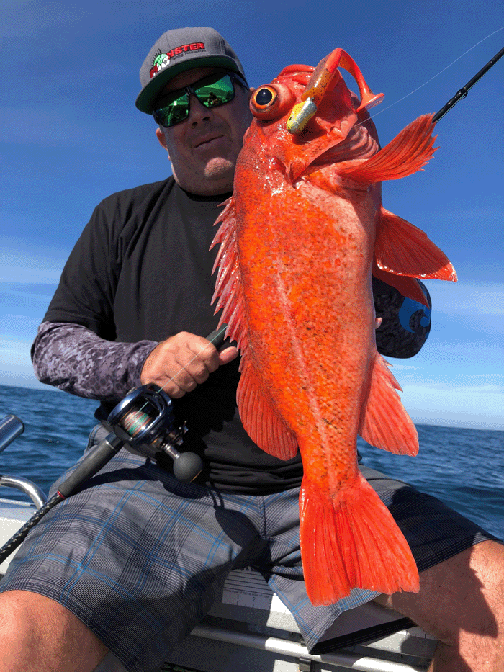 Optimum lures have been in the fishing business for many years developing a variety of swim bait lures. They have recently focused on the Optimum Magnum Pus in 5” and 7” sizes that work extremely well on a jighead or as a metal jig trailer. (Optimumbaits.com)
Optimum lures have been in the fishing business for many years developing a variety of swim bait lures. They have recently focused on the Optimum Magnum Pus in 5” and 7” sizes that work extremely well on a jighead or as a metal jig trailer. (Optimumbaits.com)
Scents are a critical part to fishing plastic baits. If you have a scent on the lure, the fish will hold on to it longer for an effective hookset.
Some of the scents on the market to look at include Hot Sauce, Unibutter, and Mermaid Milk by HUBS. They are available in local SoCal stores and online. Let me stress that this is a very important part of your rockfish arsenal.
Metal Jigs can be very productive when rockfish are active to get a strike. Dropping them to the bottom and a 3 to five crank up and drop back, or basic yoyo will get bit. As mentioned previously, putting on a plastic trailer with scent will also increase the percentage of a strike. Size and weight of metal lures will depend on depth being fished. Deeper or heavier current will dictate heavier weight lures. It’s always good to have jigs in the 2 to 6oz sizes in either anchovy, sardine, yellow, or red crab colors.
Here are a few lures to look at:
PitBull Tackle
Deadeye jigs come in 8 colors including glow in 2 to 8oz weights rigged with a single hook.
The DeadFall jigs are offered in 11 colors including glow in sizes 3.5, 4.5, 5.5, and 6.5oz with a swinging two hook rig for better hook set percentages.
The Bora jig that comes in 4 colors in 4 to 8oz weights with a swinging two hook rig. (PitBulltackle.com)
Miscellaneous
Other things to have on the boat should include knot pullers, braid cutters and if fishing metal jigs a pair of split ring pliers. Here some suggestions:
PitBull Tackle makes a braid cutter that is very sharp. It works perfect for braid and mono, but wire is not suggested. PitBull tackle also have a pair of split ring pliers that are easy to use especially on the boat. Both these products are built to last around the fishing environment. (PitBullTackle.com)
Knot Pullers can be searched on the internet or you can make your own. Easiest pair to make is get a ¾” dowel and cut into two 5” lengths. Take electrical tape and wrap dowels until they are bulkier then take a piece of thicker shrink tube and carefully heat it to adhere to dowel. These work well and are inexpensive versus the metal alternatives. I have both and they are very critical on boat to cinch knots between braid and leader. (Check out Youtube)
Keeping your catch fresh is important. Make sure if you are on your own boat get a fish bag to hold enough ice. Stash bags are awesome and keep fish fresh for days. (Stashcoolers.com)
With any type of fishing the key is to be prepared and this article gives you a list of things to consider for the upcoming rockfish season.
Check out all state regulations and adhere to the laws.
Know them and carry the state regulations on your boat. There are new regulations for 2019 with new places and depths we can fish, become familiar with them.
If fishing on a charter boat the crew any questions you might have regarding your trip. (wildlife.ca.gov)
Look forward to an excellent rockfish season. Have fun and be safe.

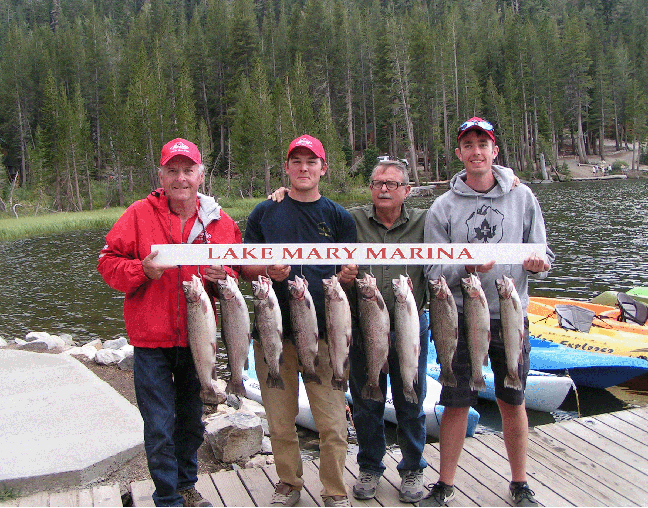
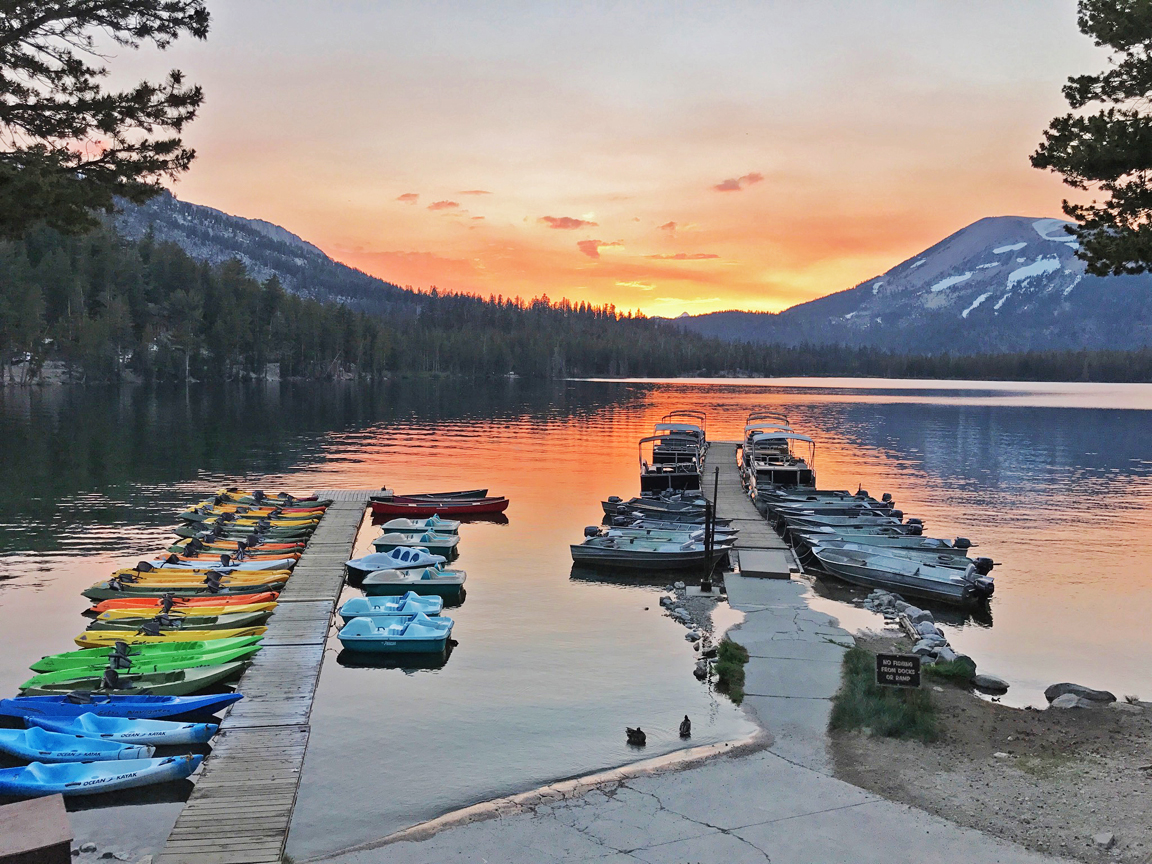 I love the Eastern Sierra. Some of the nicest scenery on the planet fills your senses just driving up the 395 highway. There are countless lakes in the Sierra to fish. The choices are narrowed down considerably when I think about lakes that have big hungry trout and easy access for fishing. Having fished the Sierra for many years and I have found that certain lakes are a par above the rest when it comes to giving me the opportunity to just drive up to a lake, unload my gear and attempt to catch the big one. Lake Mary in the Mammoth Lake basin is one of my favorites. Almost the entire lake is shore accessible. There’s lots of elbow room at this lake and if your legs aren’t up to the task of walking then consider they have a first class marina with every type of floating vessel for you to rent, ranging from kayaks, pedal boats, pontoon boats and regular aluminum v-hull boats.
I love the Eastern Sierra. Some of the nicest scenery on the planet fills your senses just driving up the 395 highway. There are countless lakes in the Sierra to fish. The choices are narrowed down considerably when I think about lakes that have big hungry trout and easy access for fishing. Having fished the Sierra for many years and I have found that certain lakes are a par above the rest when it comes to giving me the opportunity to just drive up to a lake, unload my gear and attempt to catch the big one. Lake Mary in the Mammoth Lake basin is one of my favorites. Almost the entire lake is shore accessible. There’s lots of elbow room at this lake and if your legs aren’t up to the task of walking then consider they have a first class marina with every type of floating vessel for you to rent, ranging from kayaks, pedal boats, pontoon boats and regular aluminum v-hull boats.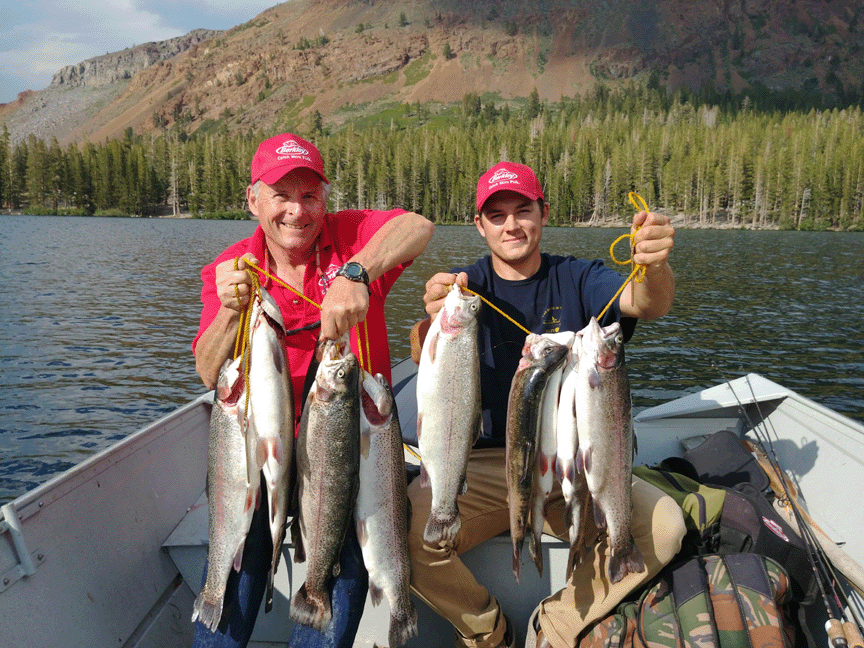 It’s a mythical fish that only a few have encountered and no photos have been shown to bear witness to its size. Maybe they should rename him the Locke Mary Beastie. But if Don says he’s out there then I’m a believer. There is also a population of brook trout and there are a few cutthroats along with some Dolly Vardens that have previously been planted years ago according to Don.
It’s a mythical fish that only a few have encountered and no photos have been shown to bear witness to its size. Maybe they should rename him the Locke Mary Beastie. But if Don says he’s out there then I’m a believer. There is also a population of brook trout and there are a few cutthroats along with some Dolly Vardens that have previously been planted years ago according to Don.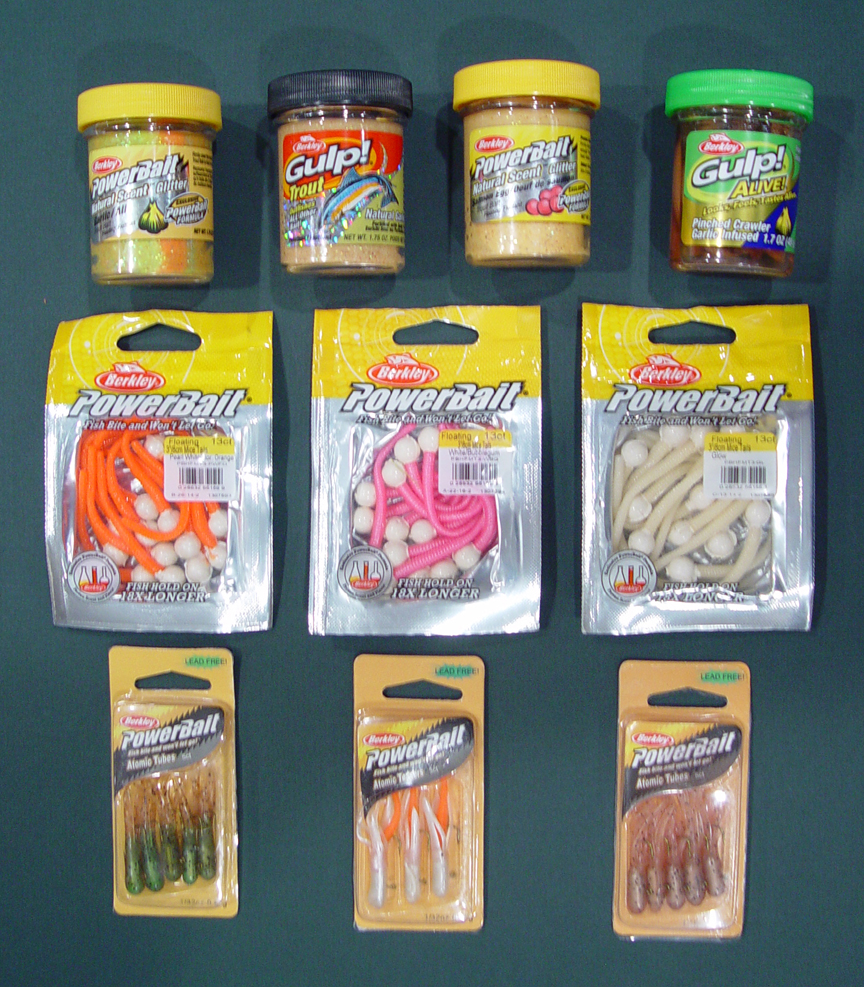 One of the top lures that consistently produces trophy trout in the Sierra is the mini tube jig. Marlon Meade Berkley pro team member recommends using the Berkley Atomic Teasers at these lakes. His top choices for colors are the Pearl White and the Cricket clear brown. It just plain works and changing up the colors keeps the action nonstop. For me, I like to use the Berkley Mice Tails with the smallest of split shots wrapped 2-3 feet from the Mice Tail on a # 8 or smaller Owner fly hook, so it drifts down slowly and moves with the current. The more popular colors to use are Pearl White head with Fluro Orange worm tail, Pearl White head with Bubblegum Pink tail and Glow White head and tail. Berkley Mice Tails have just been so darn successful for catching fish up there and is now my “go to” lure of choice. They can be rigged any number of ways by using a Carolina rig, split shot, or drop shot. Depending on the weather conditions will dictate what method to use.
One of the top lures that consistently produces trophy trout in the Sierra is the mini tube jig. Marlon Meade Berkley pro team member recommends using the Berkley Atomic Teasers at these lakes. His top choices for colors are the Pearl White and the Cricket clear brown. It just plain works and changing up the colors keeps the action nonstop. For me, I like to use the Berkley Mice Tails with the smallest of split shots wrapped 2-3 feet from the Mice Tail on a # 8 or smaller Owner fly hook, so it drifts down slowly and moves with the current. The more popular colors to use are Pearl White head with Fluro Orange worm tail, Pearl White head with Bubblegum Pink tail and Glow White head and tail. Berkley Mice Tails have just been so darn successful for catching fish up there and is now my “go to” lure of choice. They can be rigged any number of ways by using a Carolina rig, split shot, or drop shot. Depending on the weather conditions will dictate what method to use.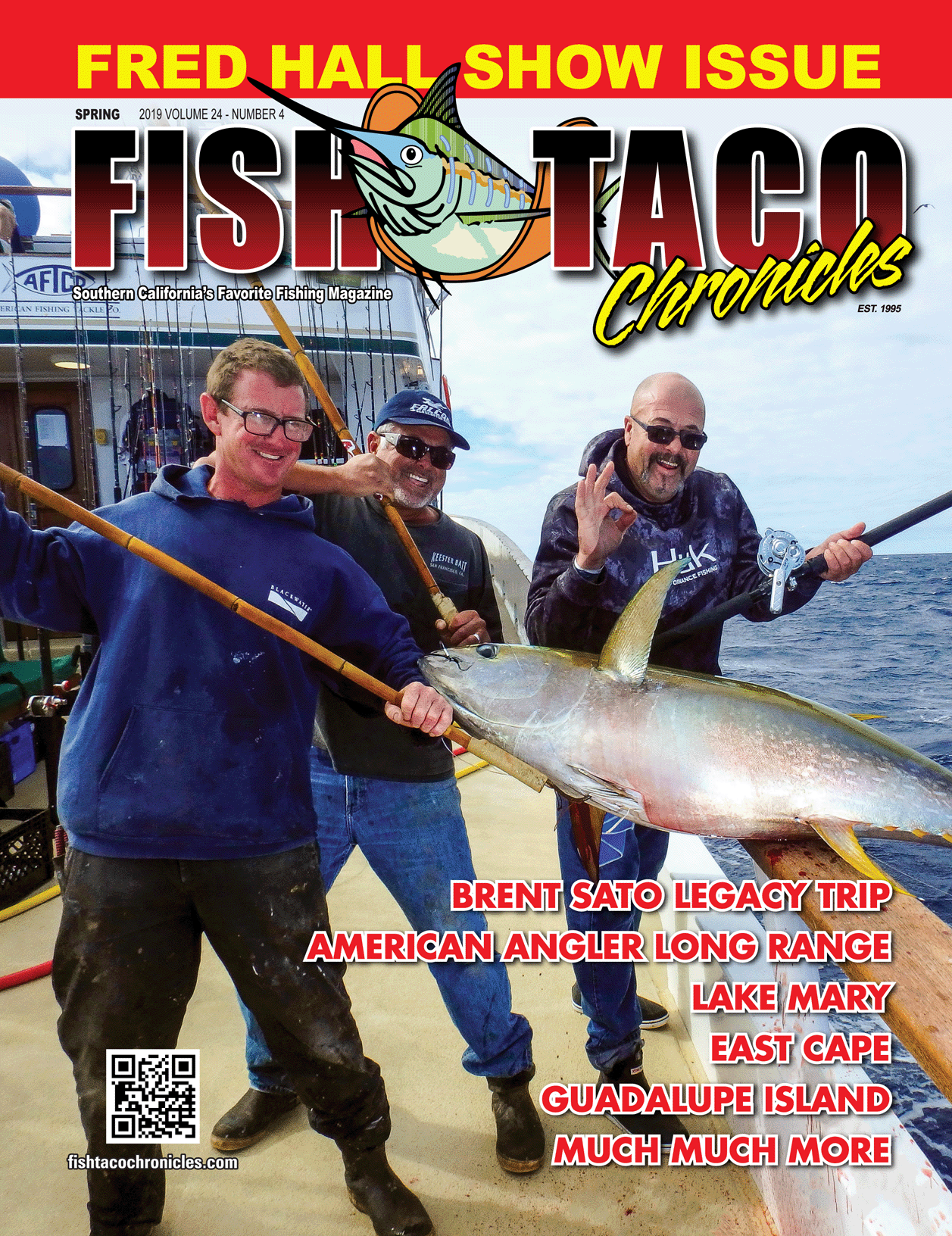
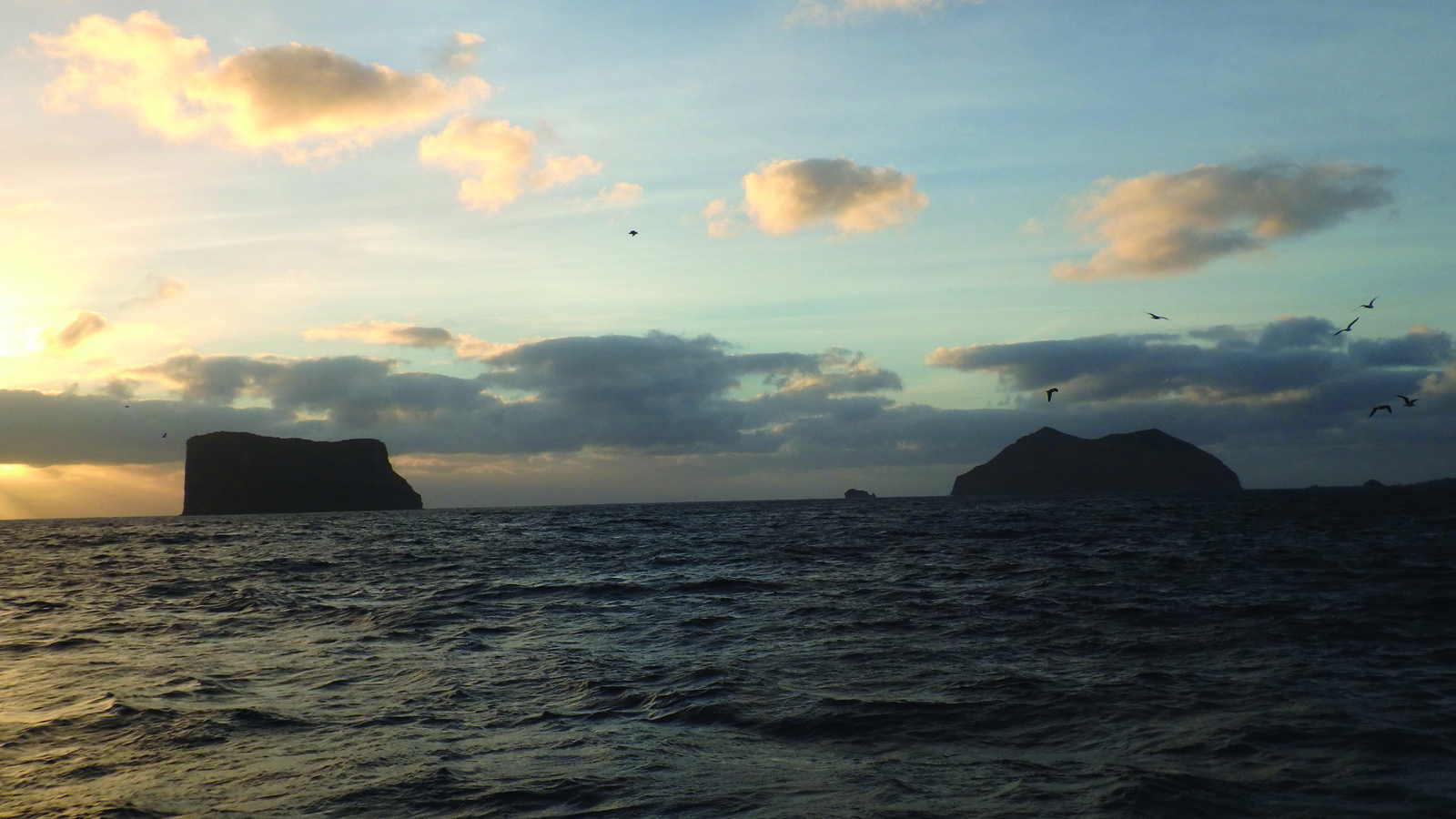

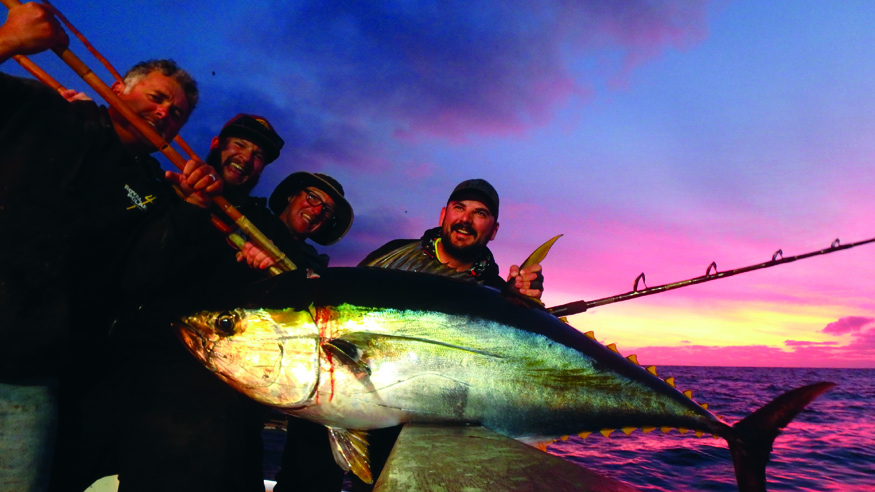
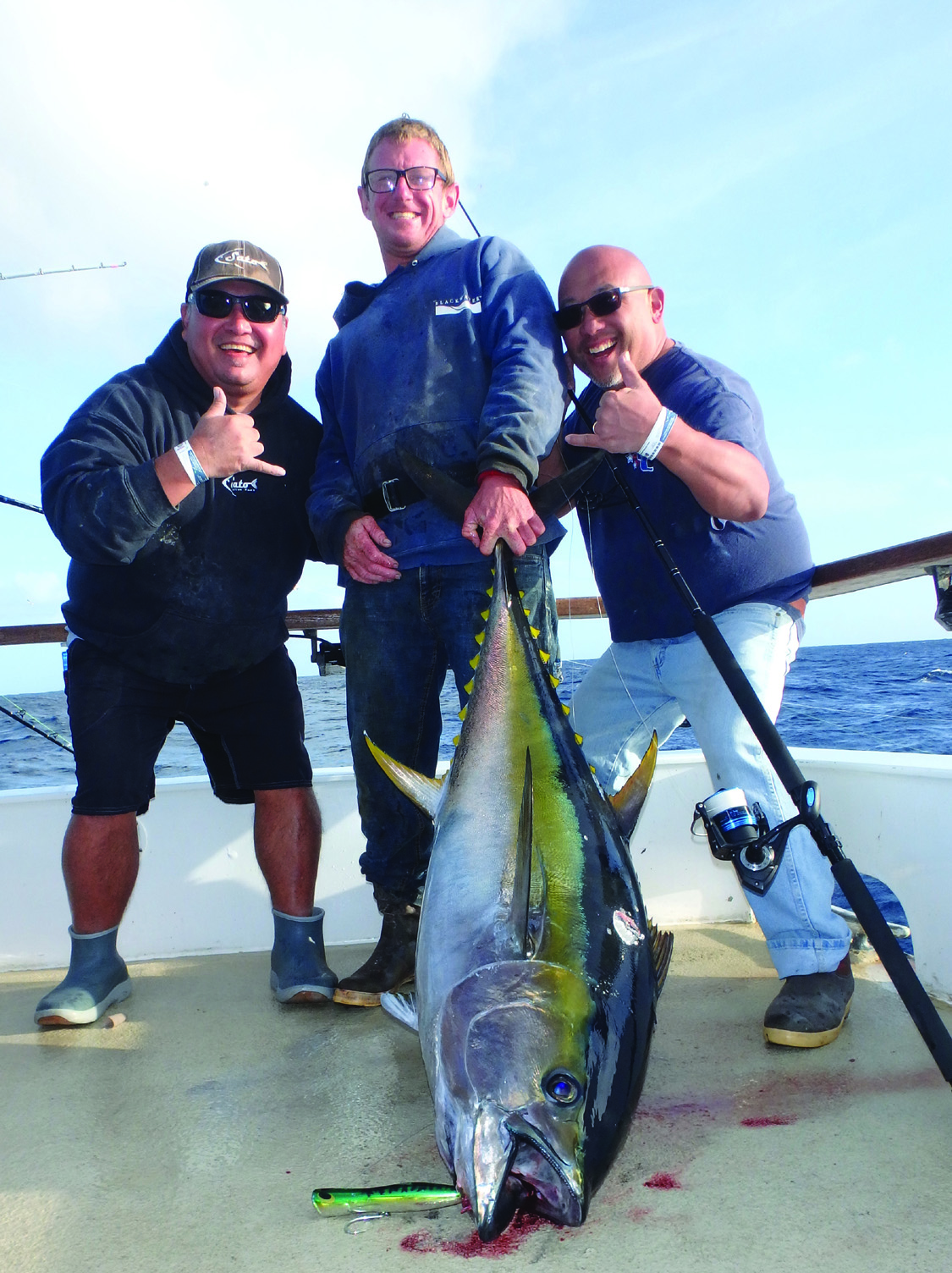
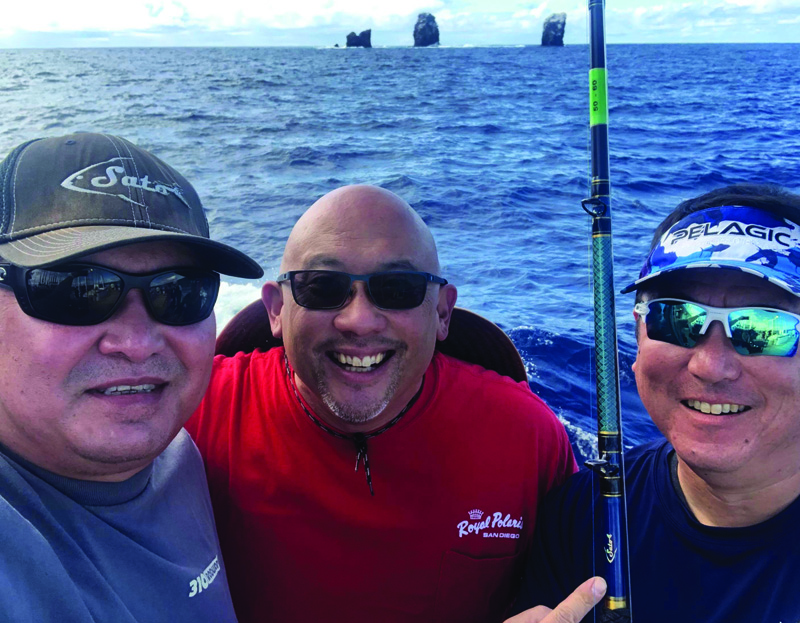 With the Wahoo under our belt, with strings of the tasty cabrilla in the well and with just enough yellowtail to leave us wanting more, the decision was made to cut and run. We started a 30-hour slow chugging ride uphill to the famed Guadalupe Island. The “Lupe” was in our future and we were ready, or so we thought.
With the Wahoo under our belt, with strings of the tasty cabrilla in the well and with just enough yellowtail to leave us wanting more, the decision was made to cut and run. We started a 30-hour slow chugging ride uphill to the famed Guadalupe Island. The “Lupe” was in our future and we were ready, or so we thought.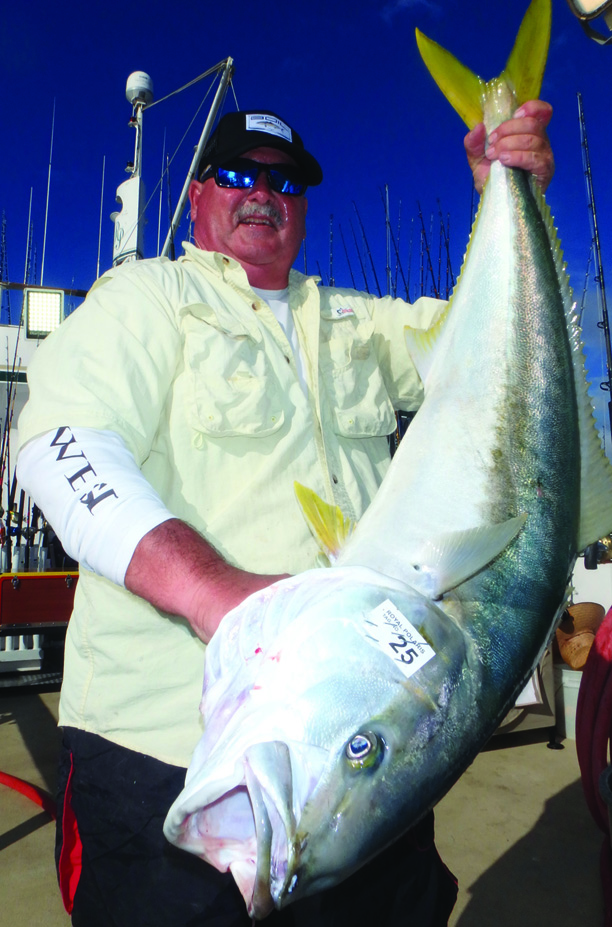
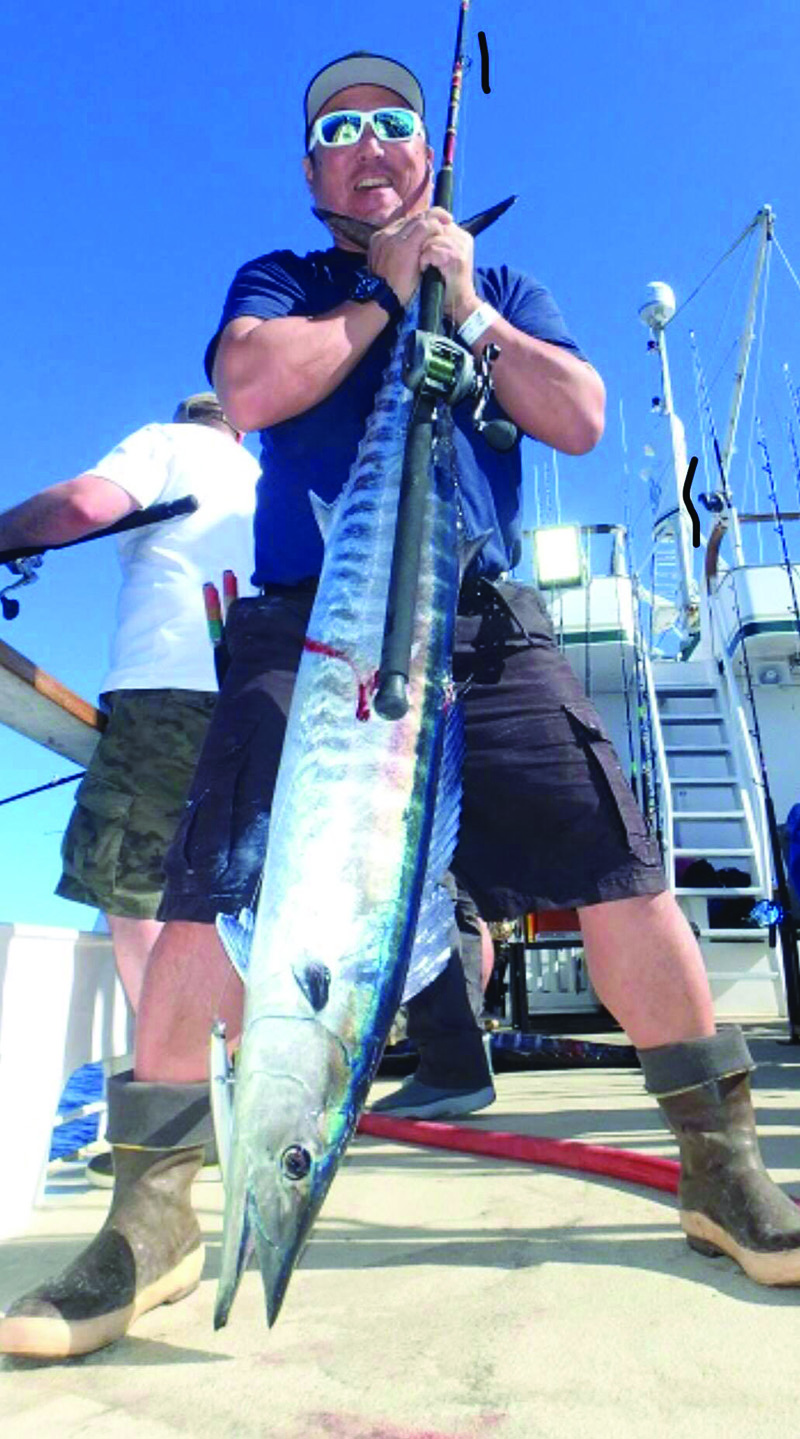 When we arrived at the Island, Capt. Roy Rose said it was going to be “breezy”. I thought to myself “breezy”?? I’ve never heard Roy use that term before. We arrived around 3am and woke up to a stiff 25-30 knots morning wind, only to increase to about 35-40 knots by mid-afternoon. The fish were biting though and all of sudden we didn’t care about the wind any more. We had a steady pick on the 60-80lb stock class, with a few stand out 100+ pound fish.
When we arrived at the Island, Capt. Roy Rose said it was going to be “breezy”. I thought to myself “breezy”?? I’ve never heard Roy use that term before. We arrived around 3am and woke up to a stiff 25-30 knots morning wind, only to increase to about 35-40 knots by mid-afternoon. The fish were biting though and all of sudden we didn’t care about the wind any more. We had a steady pick on the 60-80lb stock class, with a few stand out 100+ pound fish.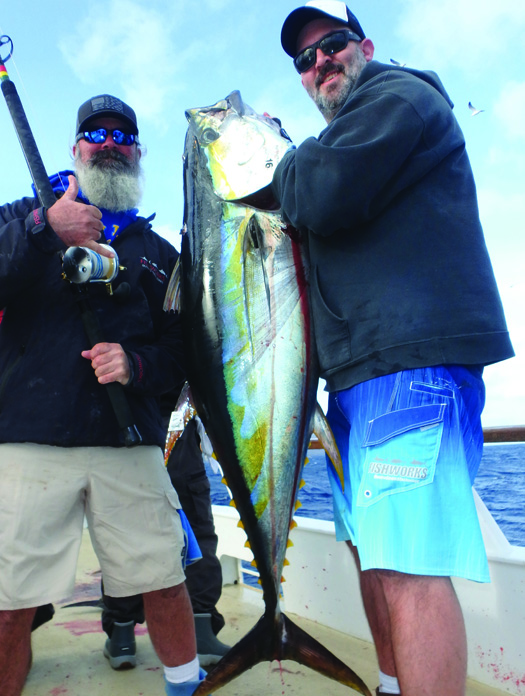
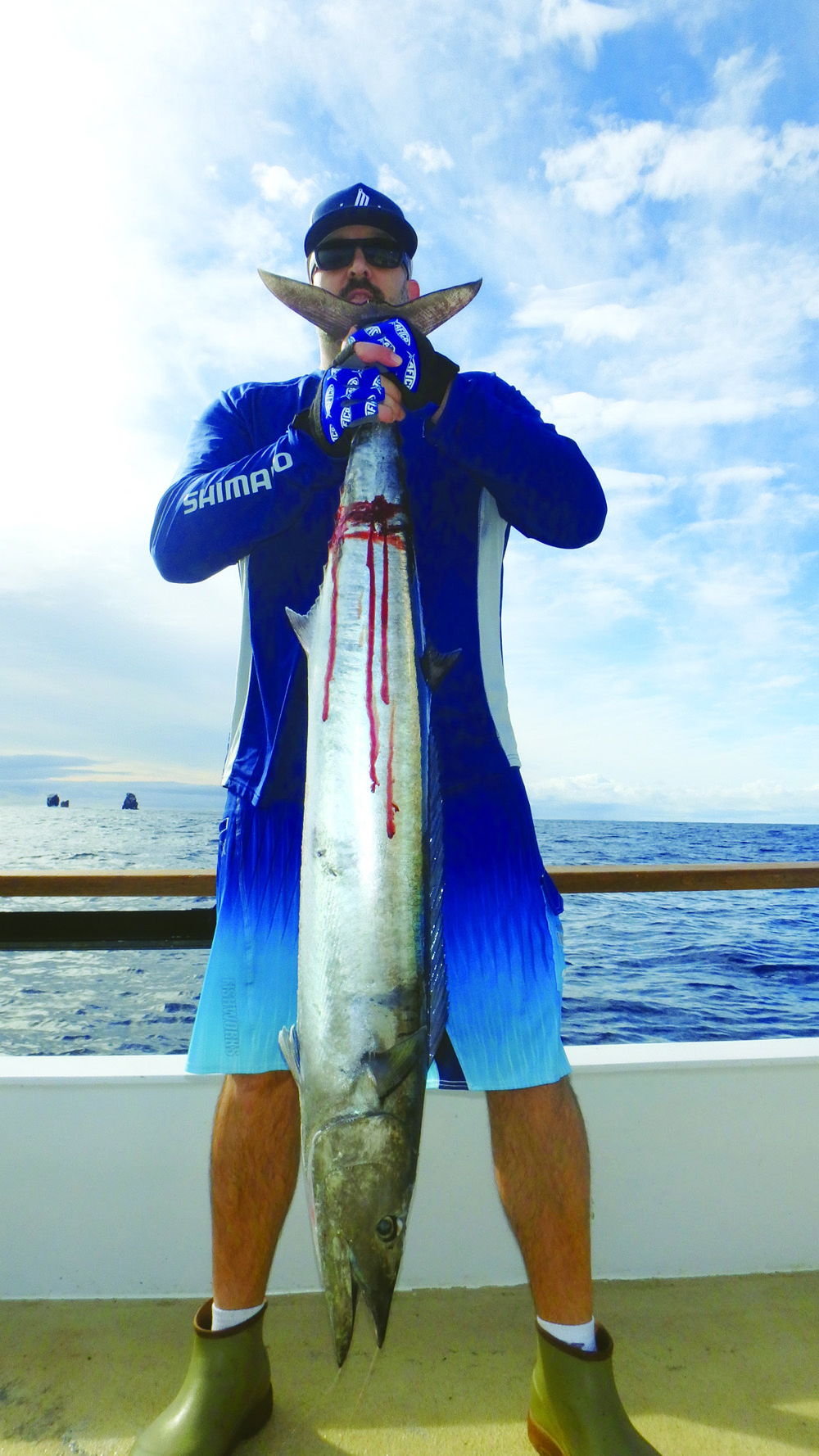
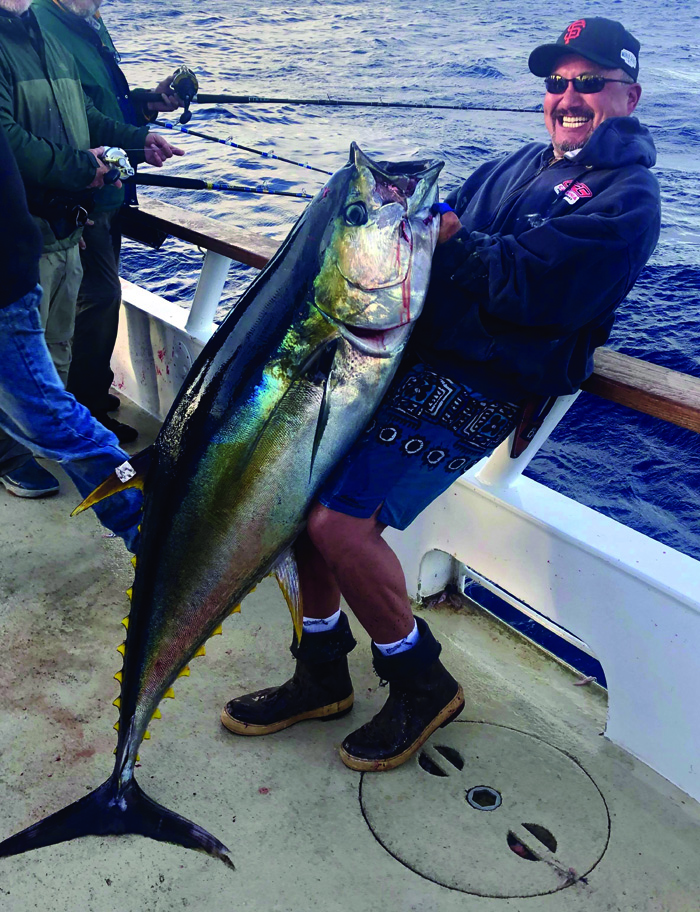 The next battle that Vic faced was the second day of the trip as Roy was beginning to hunt down the right spot of fish. Things had slowed to a dull roar. Fish were being hooked but if you know Roy, you know he wasn’t about to sit idly by waiting. He was going to find the group of fish that were ready to play. As Roy was charging on a line of fish that were up and chasing bait, he made the fateful call out to the group, “If you’ve got a popper or surface plug get it out there…they’re coming!” Little did Roy know, but Vic just had a new popping rod built for this trip. Strapped to a custom US80 tilefish was a Daiwa Saltist 6500 spooled up with 80lb braid with a short 100lb leader tied to it. The popper flew out off the starboard stern corner. With a huge splash it hit the water. Just as it did, Roy threw the throttles forward and the boat took off! Line was flying off the spool! As the bail was tripped and the line came tight, the phenomenon of line stripping off the reel was met with a quizzical face. As Roy pulled the throttles back and the boat out of gear, Vic looked at the rod…looked at the reel…looked at the line and with all of that input into his brain, he still couldn’t really tell what was going on. The rod was bent…but not really. The line was tight but no longer stripping off the spool. Pump after pump the line made it back on to the spool. Slowly but surely, he was making headway. With all eyes on him, Vic heard from the peanut gallery, “Looks like you got a Mackerel there!” A few more minutes pass and low and behold…the line starts ripping off the spool and the real fight was on. After another long fight, with adrenalin masking the fatigue, Darin asked Vic if he needed a hand. Darin grabbed the rod as Vic’s hands began to shake. As Vic made his way inside to get some fluids into his system, Darin went to work to move the fish within range to bring it aboard. Pump by pump. Crank by crank. The gaff slid in. The celebration began. A 100lb tuna found its way aboard the Royal Polaris for the brother of the man we were paying homage to on this trip.
The next battle that Vic faced was the second day of the trip as Roy was beginning to hunt down the right spot of fish. Things had slowed to a dull roar. Fish were being hooked but if you know Roy, you know he wasn’t about to sit idly by waiting. He was going to find the group of fish that were ready to play. As Roy was charging on a line of fish that were up and chasing bait, he made the fateful call out to the group, “If you’ve got a popper or surface plug get it out there…they’re coming!” Little did Roy know, but Vic just had a new popping rod built for this trip. Strapped to a custom US80 tilefish was a Daiwa Saltist 6500 spooled up with 80lb braid with a short 100lb leader tied to it. The popper flew out off the starboard stern corner. With a huge splash it hit the water. Just as it did, Roy threw the throttles forward and the boat took off! Line was flying off the spool! As the bail was tripped and the line came tight, the phenomenon of line stripping off the reel was met with a quizzical face. As Roy pulled the throttles back and the boat out of gear, Vic looked at the rod…looked at the reel…looked at the line and with all of that input into his brain, he still couldn’t really tell what was going on. The rod was bent…but not really. The line was tight but no longer stripping off the spool. Pump after pump the line made it back on to the spool. Slowly but surely, he was making headway. With all eyes on him, Vic heard from the peanut gallery, “Looks like you got a Mackerel there!” A few more minutes pass and low and behold…the line starts ripping off the spool and the real fight was on. After another long fight, with adrenalin masking the fatigue, Darin asked Vic if he needed a hand. Darin grabbed the rod as Vic’s hands began to shake. As Vic made his way inside to get some fluids into his system, Darin went to work to move the fish within range to bring it aboard. Pump by pump. Crank by crank. The gaff slid in. The celebration began. A 100lb tuna found its way aboard the Royal Polaris for the brother of the man we were paying homage to on this trip.